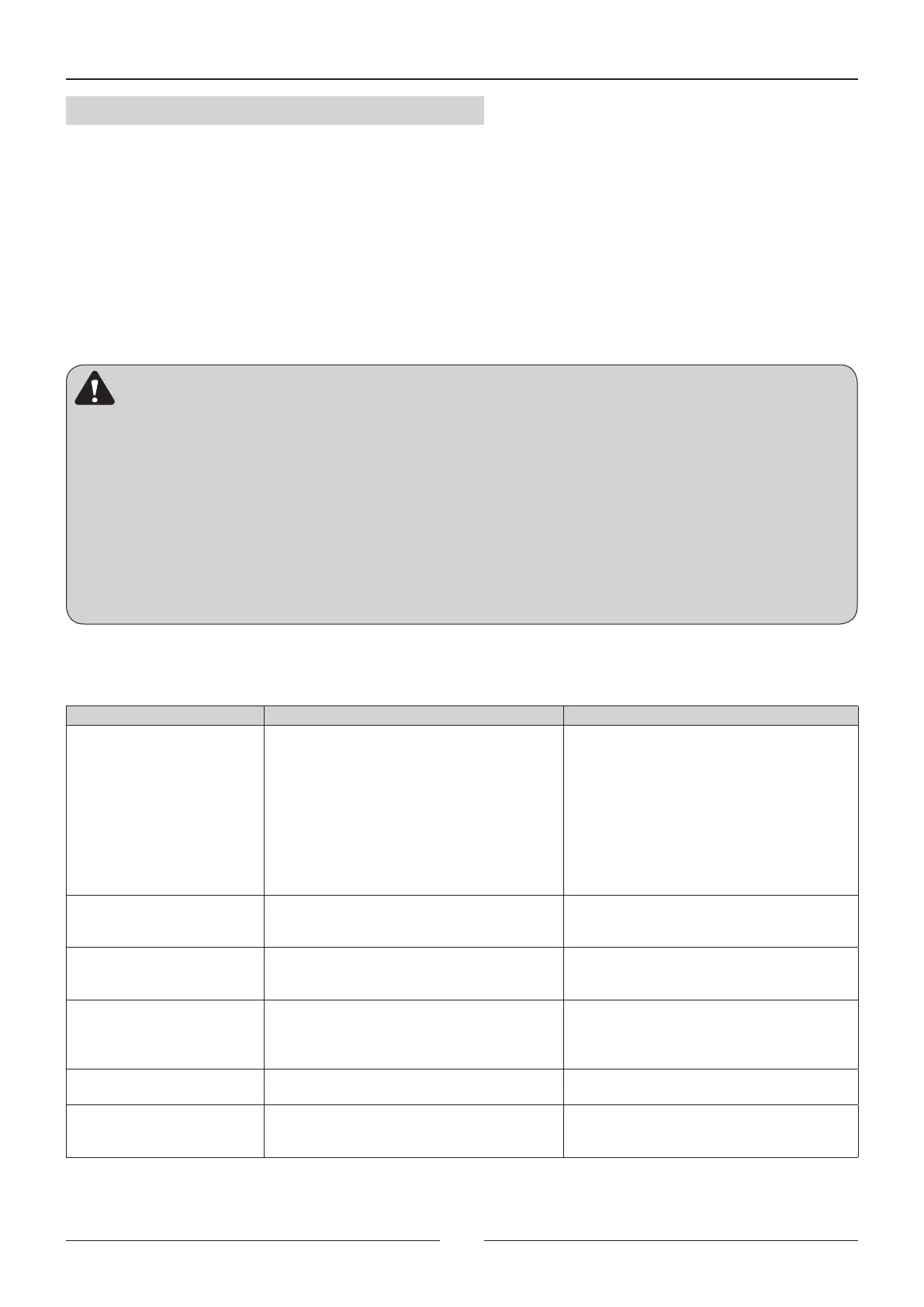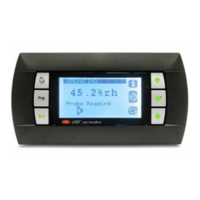37
4.- MAINTENANCE
4.2.- CORRECTIVE MAINTENANCE
- Take very special care if 4-way check valves are to be replaced since these have internal components that are very heat-
sensitive such as plastic, teon, etc.
- If a compressor must be replaced, disconnect it electrically and un-braze the suction and discharge lines. Remove the securing
screws and replace the old compressor with the new one. Check that the new compressor has the correct oil charge, screw it
to the base and connect the lines and electrical connections.
- Carry out the vacuum above and below through the Schrader valves of the outdoor unit until -750 mm Hg is reached.
Once this level of vacuum has been reached, keep the pump in operation for at least one hour. DO NOT USE THE
COMPRESSOR AS A VACUUM PUMP. If the compressor runs in vacuum it will fail.
- Charge the unit with refrigerant according to the data on the Rating Plate for the unit and check that there are no leaks.
PRECAUTIONS TO BE TAKEN IN THE USE OF R-410A REFRIGERANT
If R-410A Refrigerant is used in the unit, the following precautions characteristic of this gas should be taken:
- The Vacuum Pump must have a Check Valve or Solenoid Valve.
- Pressure Gauges and Hoses for the exclusive use with R-410A Refrigerant should be used.
- The charge should be carried out in the Liquid Phase.
- Always use scales to weight-in charge
- Use the Leak Detector exclusive for R-410AC Refrigerant.
- Do not use mineral oil, only synthetic oil to ream, expand or make connections.
- Keep pipes capped before using them and be very thorough about any possible moisture and dirt (dust, lings, burrs, etc.).
- Brazing should always be carried out in a nitrogen atmosphere.
- Reamers should always be well sharpened.
- The refrigerant bottle must contain at least 2 % of the total amount .
4.3.- FAILURE DIAGNOSIS
PROBLEM CAUSE ACTION
The unit does not start after
the last start.
* Disconnected supply.
* Main switch set to STOP.
* No water ow.
* Fuses are broken.
* Low electrical supply.
* One of the safety devices has been
activated.
* Compressor fault.
* Low water temperature.
* Check electrical supply.
* Connect main switch.
* Start water pump (and check air in system).
* Check voltage.
* Check antifreeze thermostat.
* Check high/low pressure switch.
* Change compressor.
* Create demand for cooling.
The fan does not work
(although the compressor is
operating).
* Internal safety device open.
* Bad connection.
* Poor condensation control.
* Let the motor cool.
* Connect properly.
* Check operation.
The compressor stops when
the high pressure switch is
cut off.
* Condenser coil blocked.
* Unit operating outside of limiting.
* Abnormal operation of the fans.
* Maintain condenser coil.
* Check the ventilators.
The compressor stops when
the low pressure switch is cut
off.
* Insufcient charge.
* The water exchanger is blocked (water
side).
* No water ow.
* Check the charge.
* Maintain the exchanger.
* Check that there is sufcient water ow.
The oil level in the
compressor is very low.
* The crank case heater is not working. * Replace the crank case heater and check
oil level.
High noise level of
compressor and high and low
pressures are abnormal.
* Phase connection for compressor power
supply incorrectly.
* Switch the wires between two of the
phases of compressor power supply.
